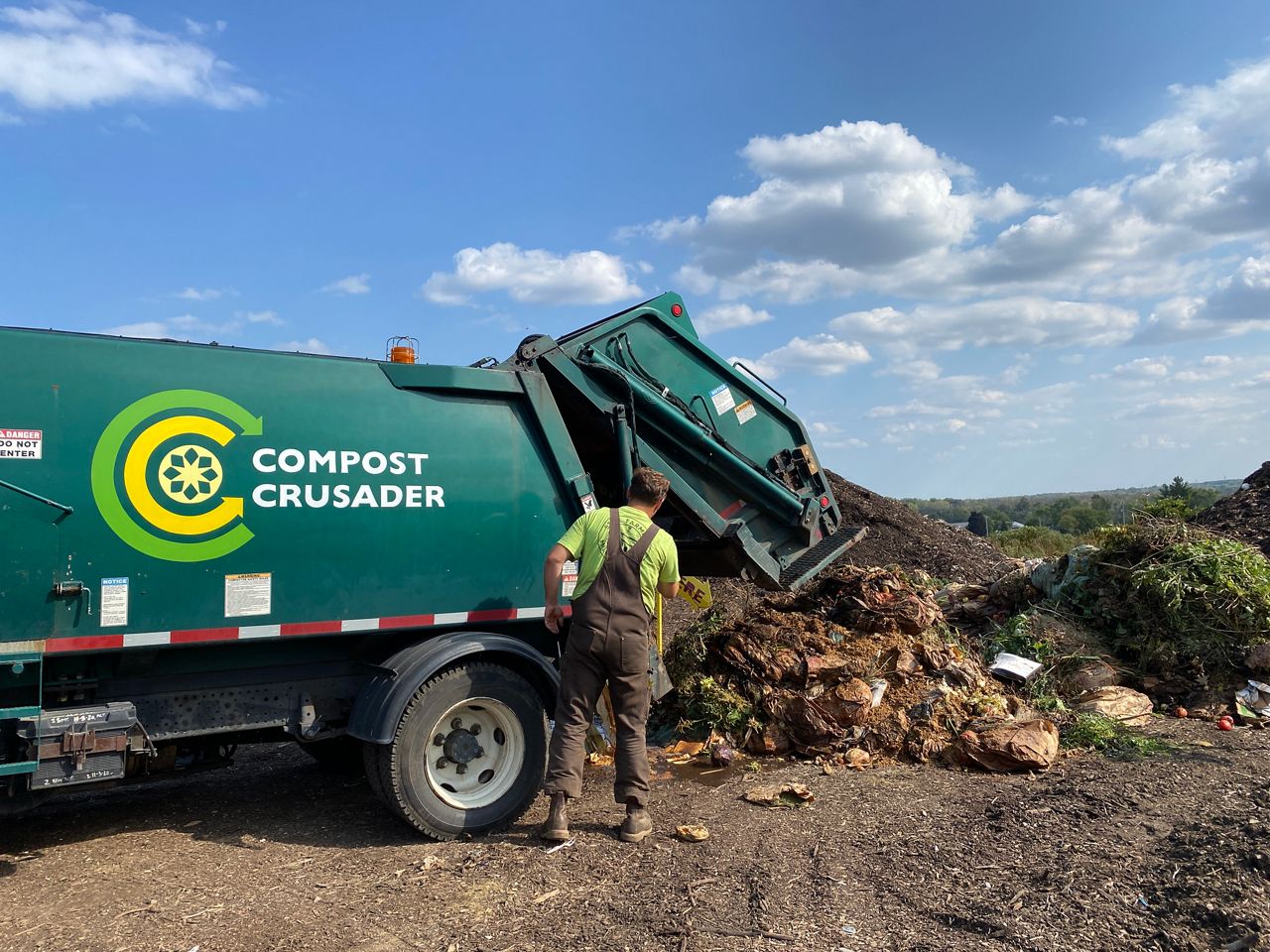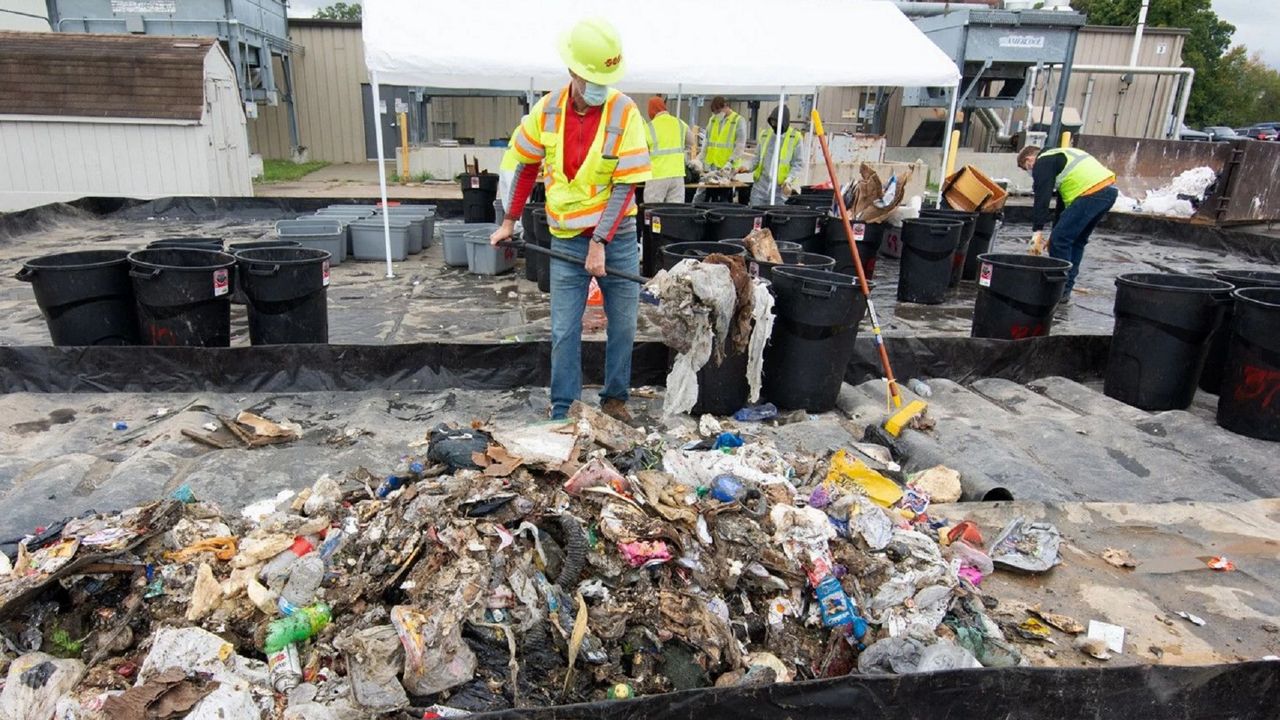MILWAUKEE — The Wisconsin Department of Natural Resources has been digging through your trash.
What You Need To Know
- The DNR's statewide study found that food waste in landfills made up almost a twice-as-big share compared to 2009
- Wisconsinites threw away almost half a million tons of recyclable items in 2020, the DNR estimates
- Some categories, like electronic waste and roof shingles, decreased in landfills with the help of new recycling programs
- Being mindful of recycling rules, going to the grocery store with a plan and composting can all reduce your personal waste
For its statewide waste characterization study, released earlier this month, the DNR and its contractors took a look at what different materials were turning up in Wisconsin’s landfills. What they found: More food being wasted, and more recyclable items getting tossed in the trash.
“One of the very notable changes was that we saw almost a doubling of the amount of food waste as a percent,” said Casey Lamensky, solid waste coordinator for the DNR.
The department conducts these reviews around once every decade to help plan out policies and ways to reduce waste, Lamensky said. This latest study took samples from fall 2020 and spring 2021; the last study before that was done in 2009.
Contractors sorted through and weighed 398 samples from 14 different landfills to get a snapshot of the municipal solid waste in Wisconsin — the kind that comes from homes and businesses and last year added up to over 4 million tons. They also looked at construction and demolition debris, which tends to have fewer, heavier items, Lamensky said.
Both recyclable items and food waste spiked in the latest study, compared to 2009 — which means there’s some work to be done in helping people reduce their waste, Lamensky said.
“We realized we need to work on both making sure that the opportunity is available, and that people will see the benefit of taking that extra moment to separate those materials from other items in their waste stream,” she said.
Sorting out recycling rules
In Wisconsin, a statewide law passed in 1990 requires some materials to be recycled instead of thrown away. But these recyclable items are still showing up in landfills, and have actually increased since the last waste study, Lamensky said.
Wisconsinites threw away almost 500,000 tons of recyclable materials in 2020, according to DNR estimates. Glass containers, aluminum and steel containers, cardboard, office paper, and No. 1 and No. 2 plastic containers have all increased in Wisconsin landfills since 2009, the study found.
“That is a surprise to us,” Lamensky said, since the required recycling program has been in place for decades now.
Part of the problem may come from people believing that recycling doesn’t actually make a difference, she said. In DNR household surveys about people’s waste habits, many Wisconsinites thought that what they put in the recycling bin would end up in the landfill anyway, Lamensky said — which, she emphasized, was not actually the case.
Laura Stevens, the solid waste and recycling coordinator at UW-Milwaukee, said that’s a myth she sees a lot among students on campus, too.
“There's this misconception that recycling is broken, so why bother doing it?” Stevens said.
The recycling system is “not perfect — very far from it,” Stevens said. But recycling can still make a big impact on the environment, she and Lamensky agreed.
The amount of energy to mine new materials, refine them and turn them into a product is much more than what it takes to “make an aluminum can back into an aluminum can,” Lamensky explained.
Just take a look at the climate impact of the required recyclables that the DNR found in their study. If all of those materials had been properly recycled, Lamensky said it would save the energy equivalent of powering 219,047 homes for a year.
Another reason why these products might end up in landfills: “Recycling is too confusing,” Stevens said. It can be hard to figure out what items can be recycled in different locations. And “wish-cycling,” or trying to recycle items that actually can’t be recycled, can contaminate a whole batch of items.
If you’re having trouble sorting out your recyclables, Stevens recommended focusing on four main categories: Aluminum cans and jars; glass jars and bottles; paper and cardboard; and thicker plastics like water bottles.
“If those are the only four things you throw in there, that is golden,” Stevens said.
Food waste piling up
More food is turning up in the trash as well: The study found that food waste made up almost a twice-as-big share of landfill material compared to 2009. Organic materials, including both food and yard waste, made up the biggest share of landfill weight in the state at more than 30%.
That includes wasted food — or formerly edible extras that got thrown away — which made up 14.5% of all waste by weight. Food scraps — or pieces like peels, rinds and grounds that don’t usually get eaten — made up 6% of waste, according to the study.
Organic waste, including food and yard scraps, can produce a lot of greenhouse gases if they’re left to break down in landfills, Lamensky said.
Landfills compress materials together and push out oxygen to save space. When there’s no oxygen present, the tiny microorganisms that break down organic waste produce a lot of methane in the process — a greenhouse gas that’s 28 times more powerful than carbon dioxide, Lamensky explained.
Cutting down on that personal food waste “really starts at the grocery store,” Stevens said.
Going to the store with a specific list — and not overdoing it on food you won’t eat in time — is key, she said. Knowing how to properly store foods to prevent them from spoiling can make a difference, too, she said, including freezing items to make them last longer.
And composting is a great way to let food waste break down in a more environmentally friendly way, Stevens added — whether that means starting a personal bin or looking for community collection options.

“Ideally, we’re not wasting food in the first place,” Lamensky said. But for whatever waste that’s left, having it break down in a compost setting instead of a landfill means “we’re making a big climate impact,” she said.
If you’re interested in starting your own compost bin at home, the DNR has some tips. There are also some community composting and pickup options across the state — like Compost Crusader, which offers collection services for homes and businesses in the Milwaukee area.
Melissa Tashjian, the president and founder of Compost Crusader, said composting doesn’t have to be a huge ordeal. You can start off with a couple easy items, like coffee grounds or banana peels, and build on those daily habits to keep more food out of the landfill.
“That’s what we try to instill in people, is that this is not difficult. It’s not rocket science,” Tashjian said. “So why not be proactive and instill some of the very simple habits now that can make a dramatic impact in the future?”
The DNR study did find some positive changes in the past decade, Lamensky said. With Wisconsin’s e-cycling law in place, electronics waste (especially TVs) decreased in landfills.
And asphalt shingles from roofs — which used to make up a big chunk of construction and demolition waste — have also declined in landfills after the state added new ways to recycle them into roads, the study found.
The latest data will help the DNR focus its efforts to keep reducing waste, Lamensky said, whether that’s outreach efforts or new infrastructure. And everyday Wisconsinites can also help out by taking the extra time to think about their personal waste streams, she said.
“I don't want to say it's easy to change habits,” Lamensky said. “But if we can all take some time, use this as an awareness opportunity … it can make a big impact.”



